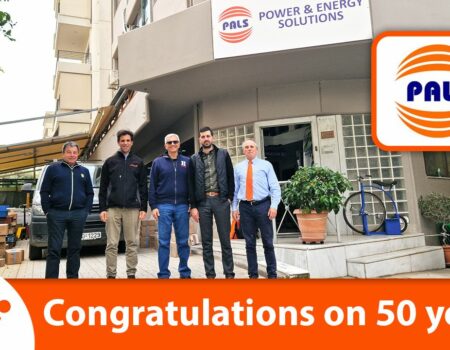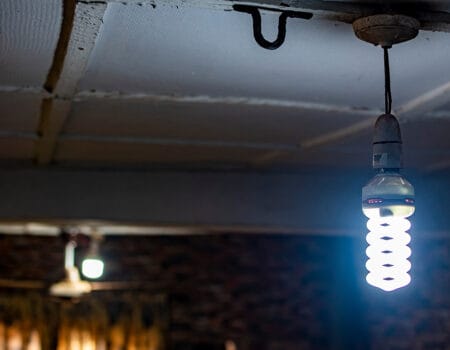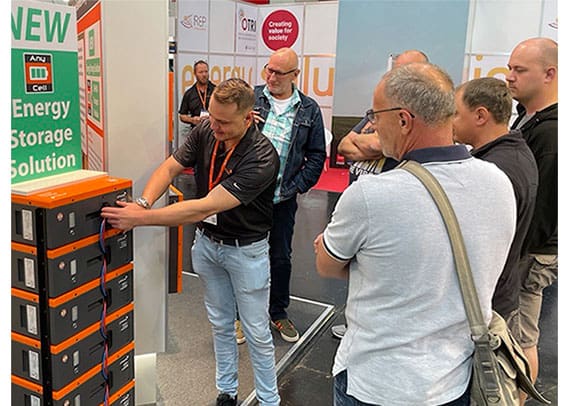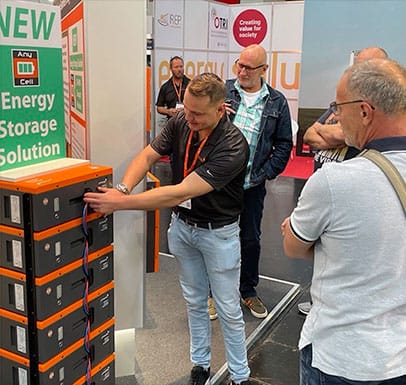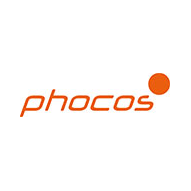
Over the last decade, battery storage options and consumer demand have dramatically increased. As the energy storage market grows, lithium iron phosphate (LiFePO4 or LFP) batteries are the most popular form of lithium energy storage today for both small and large applications. Renewable energy applications are an important part of this demand.
LFP energy storage is replacing lead-acid batteries
Solar systems designed for homes, businesses, and critical industrial applications have optimized performance by choosing the right energy storage solution. Traditionally, lead-acid batteries have been the premier choice, but LFP energy storage has taken a large share of the market. Leading companies supplying the Off-Grid and grid-tied market make lithium battery banks with top-tier LiFePO4 cells for maximum energy efficiency. Lithium batteries can provide on average nearly 50% more usable energy than lead-acid batteries for the same rated capacity. According to a report published by Allied Market Research, the global lithium-ion battery energy storage system market, “…was estimated at $4.5 billion in 2021 and is expected to hit $17.1 billion by 2031.”
LFP offers long life, safe chemistry, deep cycling, and no maintenance
What does that mean for solar installers and consumers who are looking at investing in energy independence using energy storage? With many options to choose from, it can be overwhelming. An investment in Lithium energy storage is not a small ticket item, but with a reputable product, the outcome often is stronger performance and budget management over time with simplicity and reliability. Long life, safe chemistry, deep cycling, and no maintenance are some of the key attributes LiFePO4 technology offers, compared to other Lithium chemistry options.
With over 20 years in the battery charging business, Phocos has put together a list of topics to support people who are faced with energy storage purchasing decisions and are not sure how to move forward.
- Important features to look for
- Choose an energy storage option that can integrate monitoring and readily interconnect with an inverter and energy system easily, to handle the energy management goals and strategy at the site.
- Understand the capacity of the energy storage options being evaluated. When comparing products, capacity is a major price driving factor, and a critical system design element. It is important to note that system ‘capacity’ is how much energy is stored within a system, based on nameplate ratings. Typically, when comparing models, the rated capacity and nominal voltage are kept as the common factors, as these are limited/determined by the rest of the system.
- Understand the maximum discharge rate for the energy storage product – this is proportional to the maximum load the system can power in one instant. This is another key factor to compare against ESS models of similar capacity. Depth of discharge dictates the usable capacity.
- Lithium is an umbrella term. Verify the chemistry is Lithium Iron Phosphate (LiFePO4 or LFP), which is the safest chemistry option of all lithium chemistries.
- The flexibility to add on to existing equipment is a great advantage. Life changes and so do energy needs, such as parents moving back into the house, or a purchase of a new electric vehicle occurs. In either situation, energy needs may increase and the opportunity to add more energy storage to an existing solar system becomes important. Other customers may make a budgetary decision to start with a phase 1 set up, with the intention to expand later as the budget allows. In both examples, selecting an affordable battery option that is flexible to easily extend for increased energy capacity is a bonus.
- Features are important, and customers will want to ensure products work as defined according to the manufacturer’s claims. Selecting a company that has been doing business for a respectable amount of time will instill confidence in their stated performance details on the datasheet.
- Will it be easy to install?
- A faster installation benefits consumers and installers because it saves time and money. When choosing equipment to maximize a system design, it is recommended to have similar products from the same manufacturer to have an easy plug-and-play experience. This takes extra steps out of the installation and results in a quicker time to set up and commission the installation.
- Flexible mounting creates advantages. Different location requirements necessitate different solutions. Energy storage with the option to rack mount, floor mount or wall mount is best to eliminate barriers at any given installation location.
- Connectors: Check if the energy storage product offers the option to use generic connectors for easier installations globally. Some manufacturers require specialized connectors that may be harder to find readily and stock. No project should be on hold due to connector availability.
- Is performance verified by a third party?
- Third-party verification vs. in-house verification obviously carries more weight when evaluating expected results. A third party will report data without influence to help customers understand the full product potential and be confident in the expected return on investment due to verification of expected battery life. With energy storage being one of the most expensive components of an energy system design, this point can greatly impact the timing of replacement costs at the product’s end of life. Third-party testing helps ensure the overall system cost estimates, so a customer doesn’t have unexpected surprises with future energy storage purchase requirements.
- How does Depth of Discharge affect battery life?
- Depth of Discharge (DOD) is a percentage that defines how much of the actual capacity of a battery customers can access. For a beginner, it may not sound intuitive, but a battery should not be discharged to 0% of its capacity to protect the battery. If a certain amount of load capacity is required, one must consider the DOD rating of the battery to define what further capacity should be purchased beyond the load requirements, factoring in the usable capacity. During the design phase, a plan must be made to define the appropriate DOD for the project, which will vary based on the application, site conditions, and the chosen battery manufacturer. DOD is a factor all customers need to understand to avoid failures and possibly extend the battery life beyond what is defined in the warranty conditions. Customers can trade longevity for performance and should be having this conversation with a professional to assure an optimized system design before purchasing equipment.
- Application Goals: For typical homes and small businesses, there are primary goals to be achieved, from emergency use to maintaining the combined electrical needs of an entire group of loads for an extended period of time. In either scenario, consider how the recommended depth of discharge for your selected battery will affect the life of the battery and the investment over time using ROI calculations.
- Some lithium storage solutions may offer the same cycle life guarantee at a different DOD. It is important to consider the total amount of usable capacity one can expect from a battery within its lifetime. Not all warranties are the same, so it is worth reading what is offered by each manufacturer.
- What are some warranty considerations?
- Understand if the ESS product warranty specifically provides customers with a performance guarantee.
- Compare the guaranteed cycles at the promised DOD. A product with a longer cycle life guarantee will be in service longer than its competitor.
- It is beneficial to design and install an energy system, including an LFP battery bank, with monitoring. Solar installations can be complex. When interruptions happen, troubleshooting is required to understand the source of the problem. If customers think the battery is the issue, having data from a monitoring system data to share with the battery manufacturer will help ease warranty claim support. Without this data, a manufacturer cannot assess whether the claim fits with their warranty policy and the claim may be denied.
- What to expect regarding cost?
- Calculating battery storage costs depends heavily on the operational profile of the battery, the way the energy is being used, and the technology within the storage product cells and Battery Management system (BMS). The goal is to have an affordable price per kWh with an energy storage solution that has optimized performance to realize the best ROI for the lifetime of the system. At the same time, it is vital to be realistic with maintenance expectations. Lithium batteries in general have a high energy density and offer a smaller, lighter, and more efficient option to alternative technologies like lead-acid. The major drawback of Lithium energy storage is the higher cost for the customer. However, if the design is solid, customers can often trust calculations that show money savings in the long-run due to the life expectancy duration and avoided replacement costs. For this reason, Forbes Home notes “Depending on the amount of energy you’re able to generate from your panels and how your system is configured, it may be worth investing in a more expensive, more efficient battery” such as a battery with LiFePO4 cells.
Lithium-based batteries solve many challenges, and manufacturing efforts are on the rise to meet the demands of the growing electric vehicle (EV), electrical grid storage and solar off-grid markets. The value of energy storage use goes beyond homes and businesses, in fact. Per the National Blueprint for Lithium Batteries document “Advanced batteries are increasingly important for multiple commercial markets, including stationary storage systems, and aviation, as well as for national defense uses.”
No matter what the application, this article aims to help customers navigate through the decision-making process and ultimately select the right energy storage product for any upcoming project. Following these tips will help optimize the investment and assure years of satisfaction. For consumers, the goal is to ‘set it and forget it’, and that is why Phocos has created a LFP energy storage product that seamlessly integrates with our other product lines (hybrid inverter and remote monitoring) to simplify installation and is also third-party tested and verified, exceeding IEC standards, so performance can be trusted during the generous warranty period.
Looking for more information? Please check the product links above or reach out to our sales team and technical team for further support.
